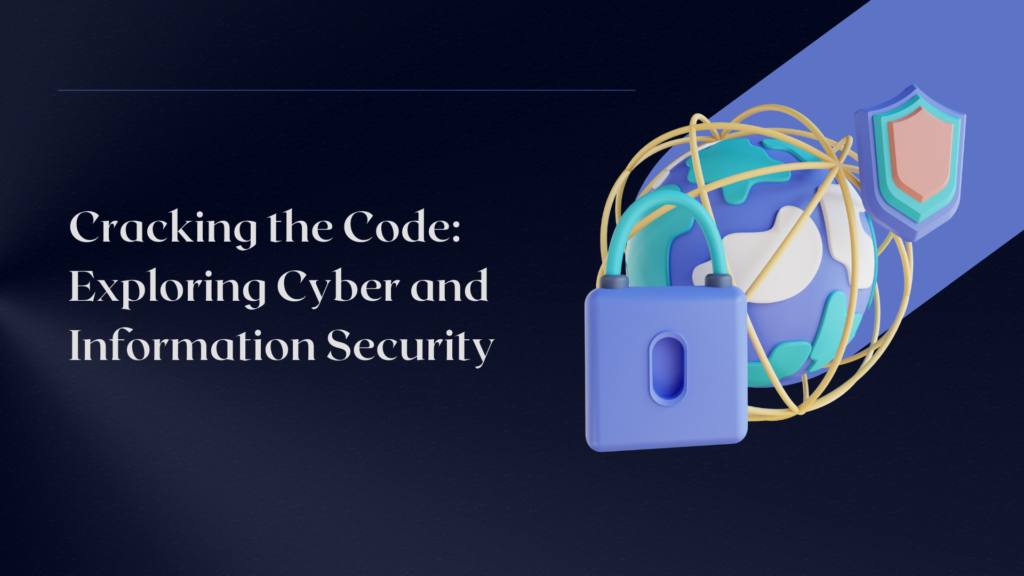Demystifying the World of Cyber Security and Information Security

In our increasingly connected world, the terms “Information Security” and “Cyber Security” have become crucial pillars in safeguarding our digital lives. Understanding these concepts is essential to protect sensitive data and ensure the safe functioning of our digital infrastructure. Let’s dive into what these terms mean, explore cloud and network security, and discuss the threats that loom in the digital realm.
What Is Information Security?
Information Security, often referred to as InfoSec, is the practice of protecting information by mitigating information risks. It involves various processes, technologies, and strategies designed to safeguard data from unauthorized access, disclosure, alteration, or destruction. InfoSec encompasses a broad spectrum of protective measures, from data encryption and access controls to security policies and employee training.
What Is Cyber Security?
Cyber Security, a subset of Information Security, focuses specifically on the protection of internet-connected systems, including hardware, software, and data, from theft, damage, or unauthorized access. It deals with the prevention, detection, and response to cyber threats. Cyber Security measures are employed to safeguard the integrity, confidentiality, and availability of digital assets.
What Are Cloud and Network Security?
- Cloud Security: Cloud Security is a branch of Cyber Security that concentrates on protecting data stored in cloud platforms and services. It involves securing cloud infrastructure, applications, and data from breaches, theft, and data loss. Measures include data encryption, identity and access management, and continuous monitoring.
- Network Security: Network Security is the practice of securing the integrity and confidentiality of data as it flows between devices or across networks. This is achieved through measures like firewalls, intrusion detection systems, and virtual private networks (VPNs) to prevent unauthorized access and data breaches.
Cyber Security Threats and Attacks
Cyber Security encompasses a wide array of threats and attacks, including:
- Malware: Malicious software such as viruses, worms, and ransomware that can infect and damage systems.
- Phishing: Deceptive attempts to obtain sensitive information, often through fraudulent emails or websites.
- Distributed Denial of Service (DDoS): Overwhelming a network or website with traffic to disrupt its functioning.
- Social Engineering: Manipulating individuals into divulging confidential information.
- Insider Threats: Malicious activities by individuals within an organization.
- Zero-Day Vulnerabilities: Exploiting software vulnerabilities unknown to the software vendor.
Cyber Security vs. Information Security (In Tabular Form)
| Aspect | Cyber Security | Information Security |
| Scope | Focused on protecting internet-connected systems. | Encompasses a broader range of protective measures. |
| Objective | Safeguarding data, hardware, and software from cyber threats. | Mitigating information risks to protect data integrity. |
| Specialization | Addresses threats specific to digital systems and networks. | Protects data at rest, in transit, and during processing. |
| Subdomains | Includes network security and cloud security. | Encompasses data encryption, access control, and policies. |
| Focus on Data | Ensures data integrity, confidentiality, and availability. | Concentrates on securing data throughout its lifecycle. |
In conclusion, both Cyber Security and Information Security play vital roles in protecting digital assets. Cyber Security is a subset of Information Security, specifically focusing on digital systems and networks. Understanding the differences and the evolving threat landscape is essential to implement robust security strategies in our increasingly digital world.

Leave a Reply